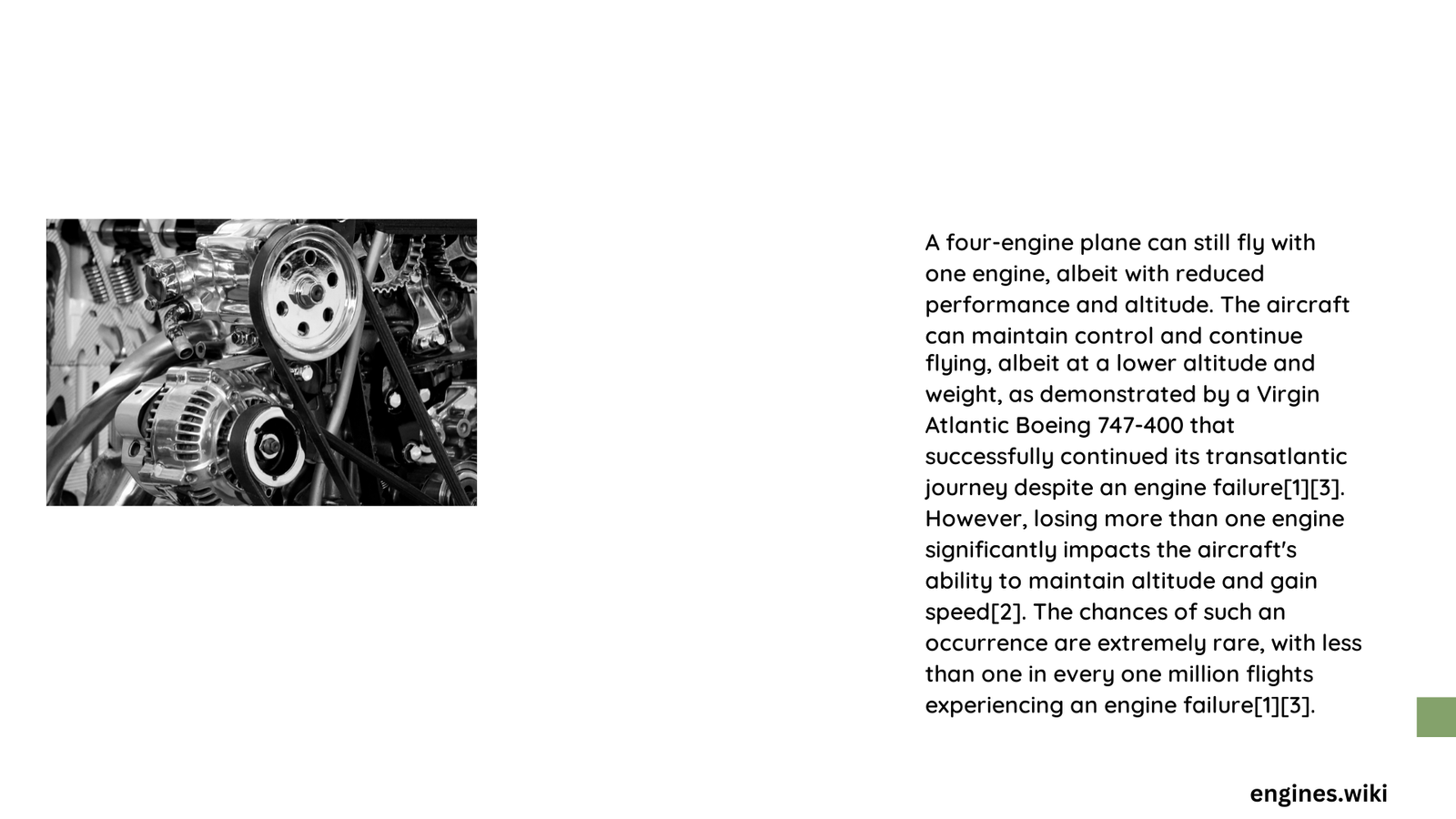Modern aviation engineering has developed sophisticated safety mechanisms that enable four-engine aircraft to maintain controlled flight even when experiencing multiple engine failures. While challenging, multi-engine aircraft are designed with redundancy and performance capabilities that allow pilots to navigate and land safely under extreme circumstances, leveraging advanced aerodynamic principles and rigorous training protocols.
Can a Four Engine Plane Survive with Single Engine Operation?
What Determines Four-Engine Aircraft Survival with One Engine?
Four-engine aircraft possess remarkable engineering resilience that allows them to potentially fly and land safely with reduced engine power. The survival depends on multiple critical factors:
Performance Metrics for Single-Engine Flight
| Performance Parameter | Impact with One Engine |
|---|---|
| Thrust Capability | Reduced by 75% |
| Climb Gradient | Drops to 1.7-3.0% |
| Control Speed (Vmc) | Increases significantly |
| Range Reduction | 40-60% potential decrease |
Key Survival Factors
- Aircraft Design Redundancy
- Engineered with multiple independent power systems
- Structural integrity maintained across different configurations
-
Advanced control systems compensate for power loss
-
Pilot Training Protocols
- Extensive simulation of engine failure scenarios
- Precise emergency procedure knowledge
- Quick decision-making capabilities
How Do Pilots Manage Single-Engine Operation?
Pilots follow meticulous procedures during engine failure:
- Immediate Engine Identification
- Verify specific engine failure through instrument readings
- Confirm complete power loss
-
Reduce thrust on remaining engines
-
Communication Protocols
- Declare emergency with Air Traffic Control
- Follow predetermined emergency flight paths
- Maintain calm, systematic approach
What Technical Limitations Exist During Single-Engine Flight?
Technical constraints significantly impact aircraft performance:
- Reduced Thrust Capabilities
- Substantial decrease in total available power
- Limited climb and acceleration potential
-
Increased fuel consumption rates
-
Altitude Maintenance Challenges
- Potential inability to maintain current altitude
- Restricted flight envelope
- Mandatory descent and landing procedures
Can All Four-Engine Aircraft Guarantee Safe Landing?
Safety depends on:
– Specific aircraft model
– Current flight conditions
– Remaining engine performance
– Pilot expertise
– Proximity to suitable landing locations
Regulatory Safety Standards
Aviation authorities like FAA mandate strict requirements:
– Minimum climb gradient specifications
– Single-engine operational certification
– Comprehensive emergency procedure documentation
Technological Advancements Enhancing Safety
Modern four-engine aircraft incorporate:
– Advanced fly-by-wire systems
– Real-time engine monitoring
– Predictive maintenance technologies
– Automated emergency response mechanisms
Conclusion

While challenging, four-engine aircraft can potentially fly and land safely with one engine through sophisticated engineering, rigorous pilot training, and comprehensive safety protocols.
